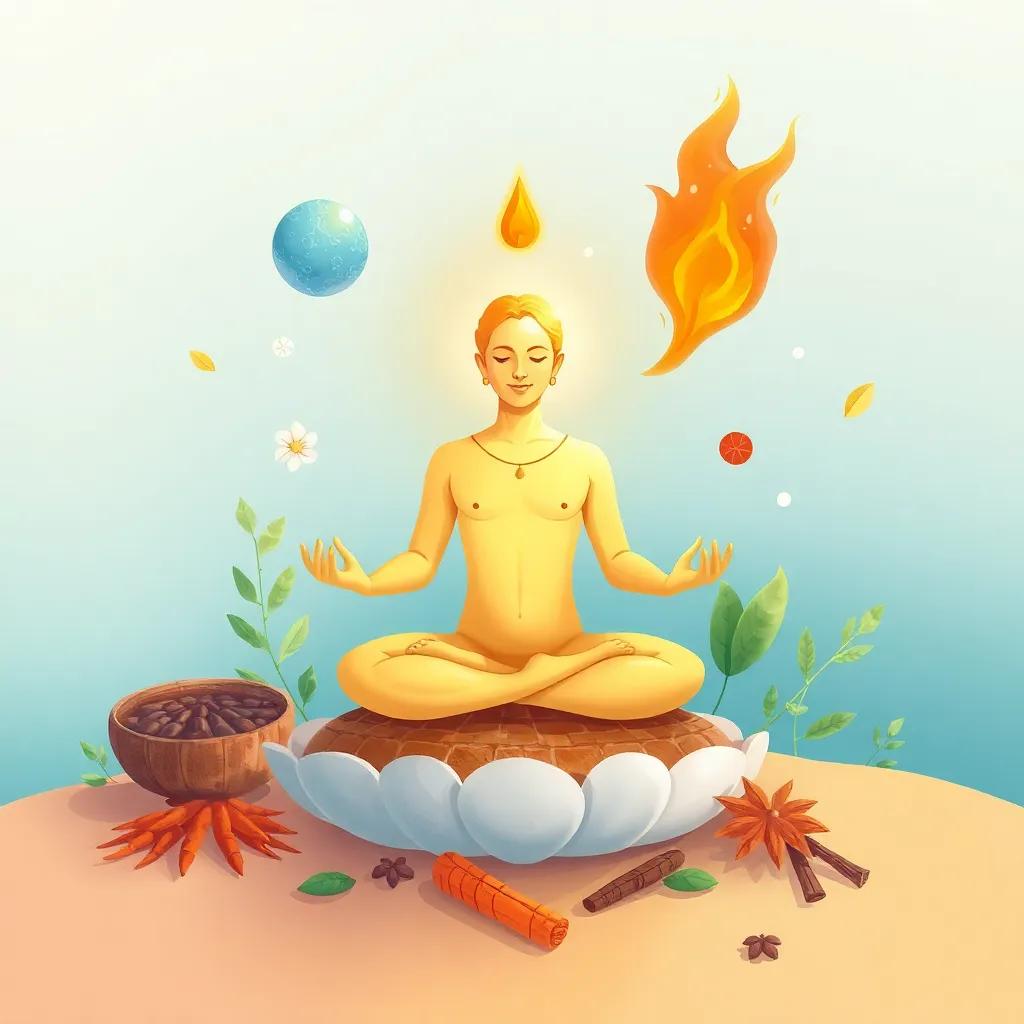Explore the principles of Ayurvedic detoxification, focusing on the Panchakarma process, its benefits, and how to incorporate Ayurvedic practices into daily life.
Discover the ancient science of Ayurvedic detoxification and how the Panchakarma process can rejuvenate your body and mind.
Introduction to Ayurvedic Detoxification
Ayurveda, the ancient Indian system of medicine, has been practiced for over 5,000 years. It emphasizes the balance of mind, body, and spirit to achieve optimal health. One of the key components of Ayurveda is detoxification, known as Panchakarma, which involves five primary actions: Vamana (emesis), Virechana (purgation), Basti (enema), Nasya (nasal administration), and Raktamokshana (bloodletting). These practices aim to cleanse the body of toxins and restore balance.
The Five Actions of Panchakarma
Panchakarma is not just a detoxification process; it is a rejuvenation therapy that helps in the prevention of diseases and promotes longevity,
says Dr. Vasant Lad, a renowned Ayurvedic practitioner and author of The Complete Book of Ayurvedic Home Remedies.
Vamana (Emesis): This process involves the induction of therapeutic vomiting to eliminate excess Kapha (water and earth elements) from the body. It is particularly beneficial for respiratory disorders and skin diseases.
Virechana (Purgation): Virechana involves the use of herbal laxatives to cleanse the gastrointestinal tract. It is effective in treating liver disorders, skin diseases, and chronic fever.
Basti (Enema): Basti is considered the most important of the Panchakarma procedures. It involves the administration of medicated oils or decoctions through the rectum to cleanse the colon and balance Vata (air and space elements).
Nasya (Nasal Administration): Nasya involves the application of medicated oils or powders through the nasal passages. It is beneficial for sinusitis, migraines, and neurological disorders.
Raktamokshana (Bloodletting): This procedure involves the removal of impure blood from the body. It is used to treat skin diseases, gout, and other blood-related disorders.
Scientific Evidence Supporting Ayurvedic Detoxification
Several studies have explored the efficacy of Ayurvedic detoxification. A study published in the Journal of Ayurveda and Integrative Medicine
found that Panchakarma significantly reduced symptoms of chronic fatigue syndrome and improved overall quality of life. Another study in the International Journal of Yoga
reported that Panchakarma therapy led to significant reductions in stress and anxiety levels.
Incorporating Ayurvedic Practices into Daily Life
Dr. David Frawley, an Ayurvedic expert, suggests that incorporating simple Ayurvedic practices into daily life can have profound effects on health. Start with a daily routine that includes oil pulling, tongue scraping, and drinking warm water with lemon in the morning,
he advises.
Dietary Recommendations: Ayurveda emphasizes the importance of a balanced diet tailored to one’s dosha (body type). Foods should be fresh, organic, and prepared with mindfulness. Herbal teas and spices like turmeric, ginger, and cumin are recommended for their detoxifying properties.
Herbal Remedies: Ayurveda offers a wide range of herbal remedies for detoxification. Triphala, a combination of three fruits, is commonly used to cleanse the digestive system. Ashwagandha and Brahmi are recommended for their stress-relieving and cognitive-enhancing properties.
Lifestyle Changes: Regular exercise, yoga, and meditation are integral to Ayurvedic practice. These activities help in maintaining the balance of the doshas and promoting overall well-being.
Practical Tips for Safe Detoxification
Before starting any detoxification process, it is essential to consult with a qualified Ayurvedic practitioner. Panchakarma should be done under the supervision of an experienced practitioner to avoid any adverse effects,
warns Dr. Lad.
Start with simple practices like oil pulling and tongue scraping. Gradually incorporate dietary changes and herbal remedies. Regular yoga and meditation can also support the detoxification process.
Conclusion
Ayurvedic detoxification offers a holistic approach to health and well-being. By understanding and incorporating the principles of Panchakarma and Ayurvedic practices into daily life, one can achieve a balanced and rejuvenated state of being. As Dr. Frawley aptly puts it, Ayurveda is not just a system of medicine; it is a way of life.




